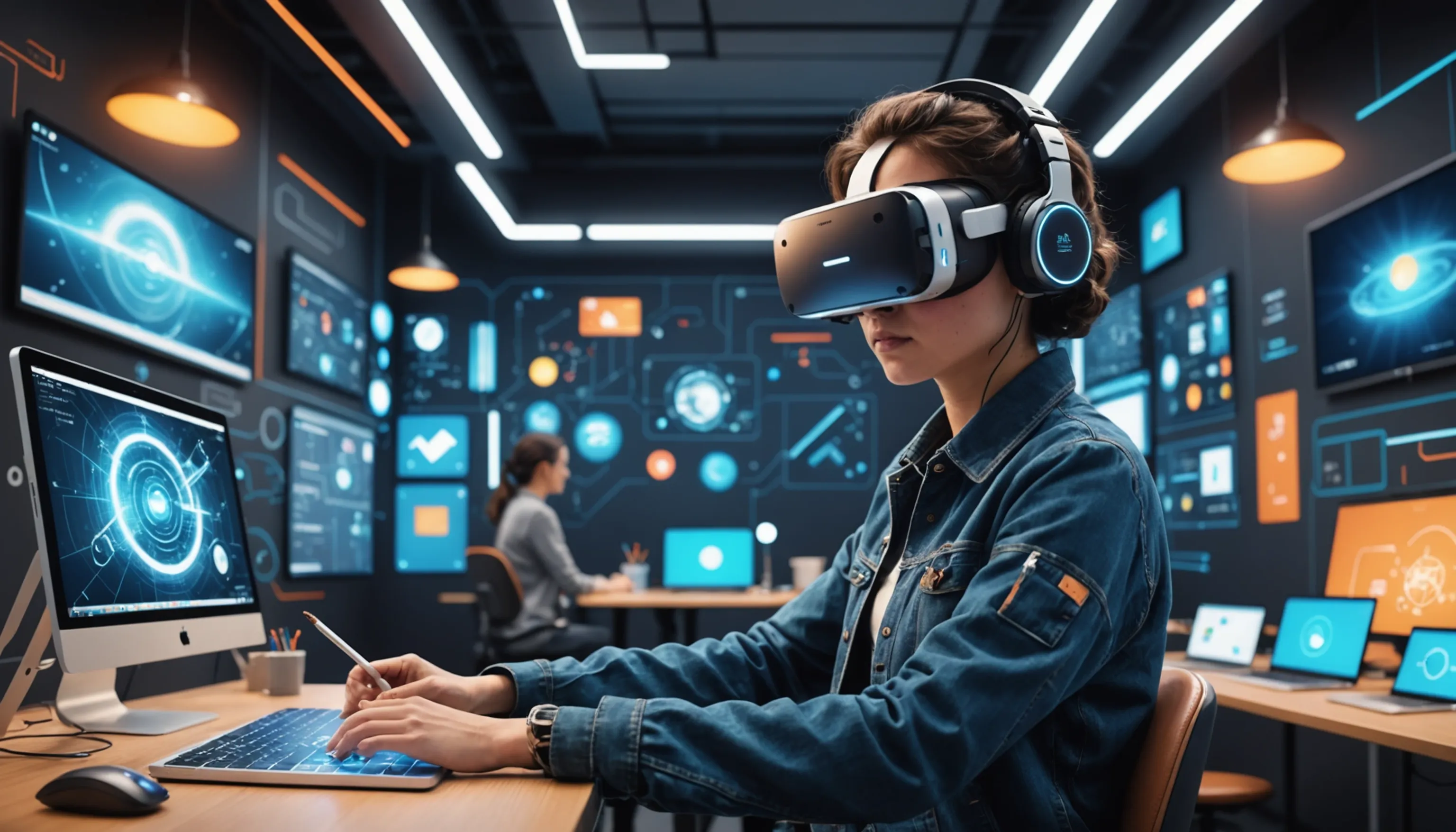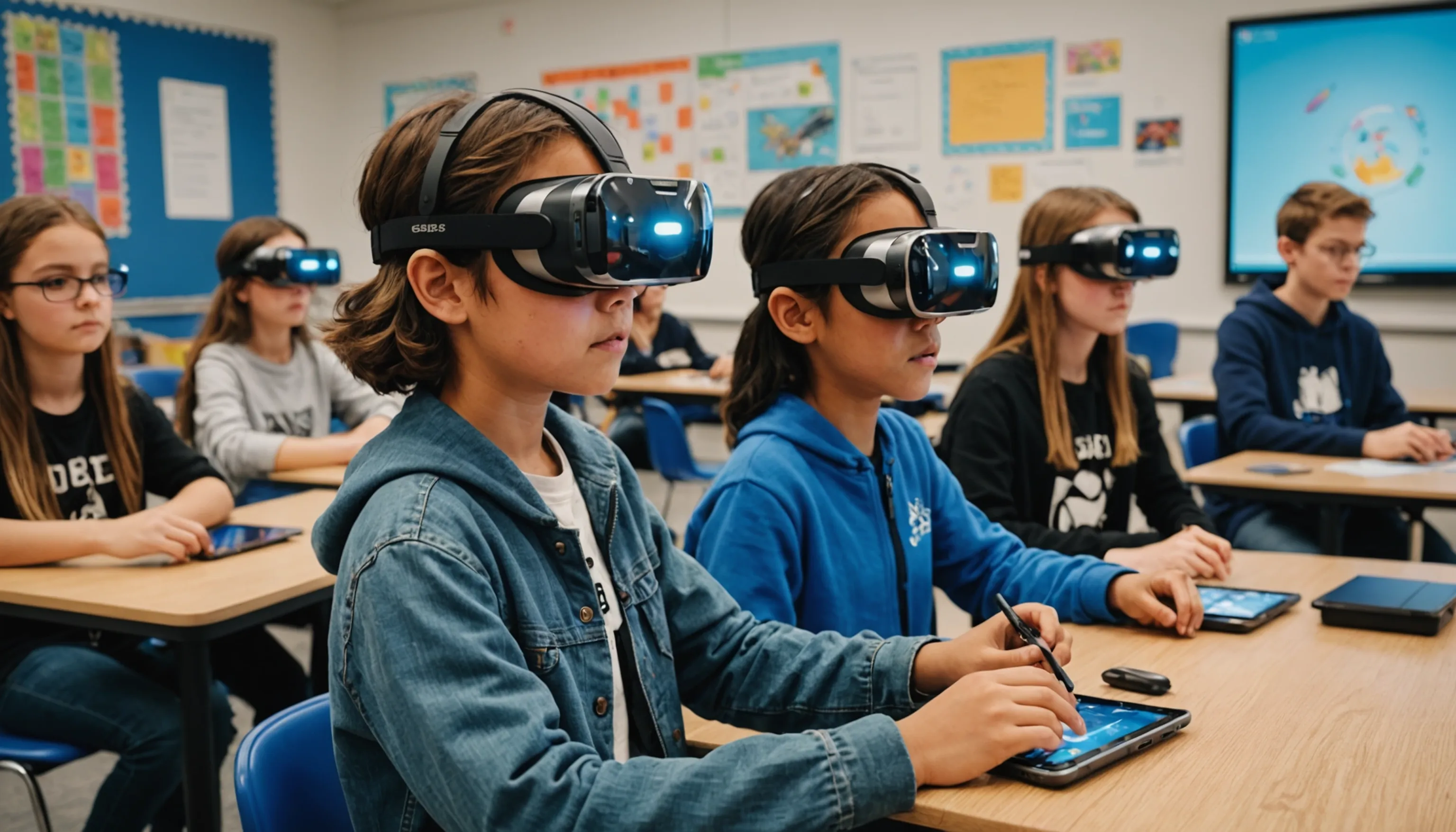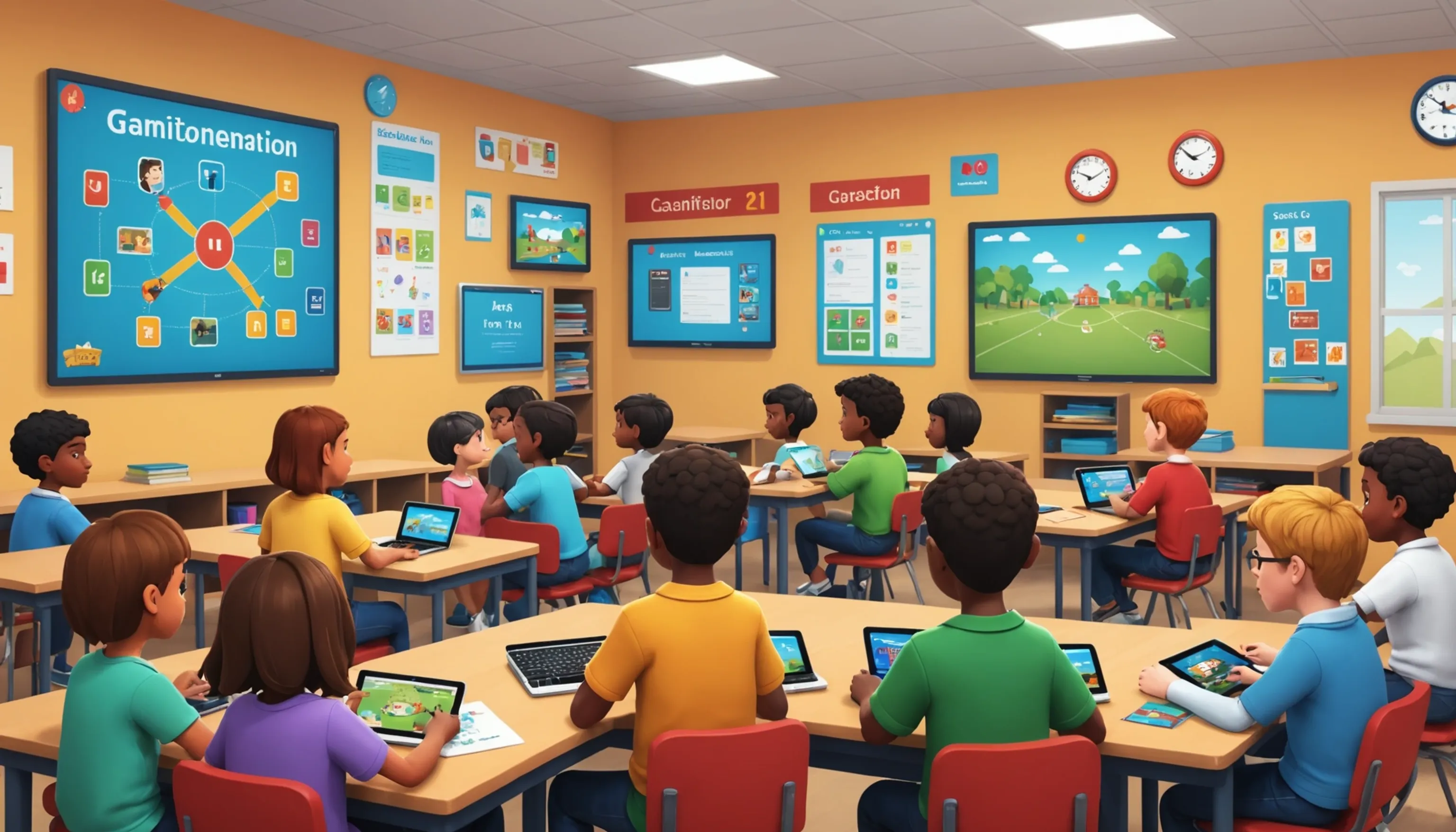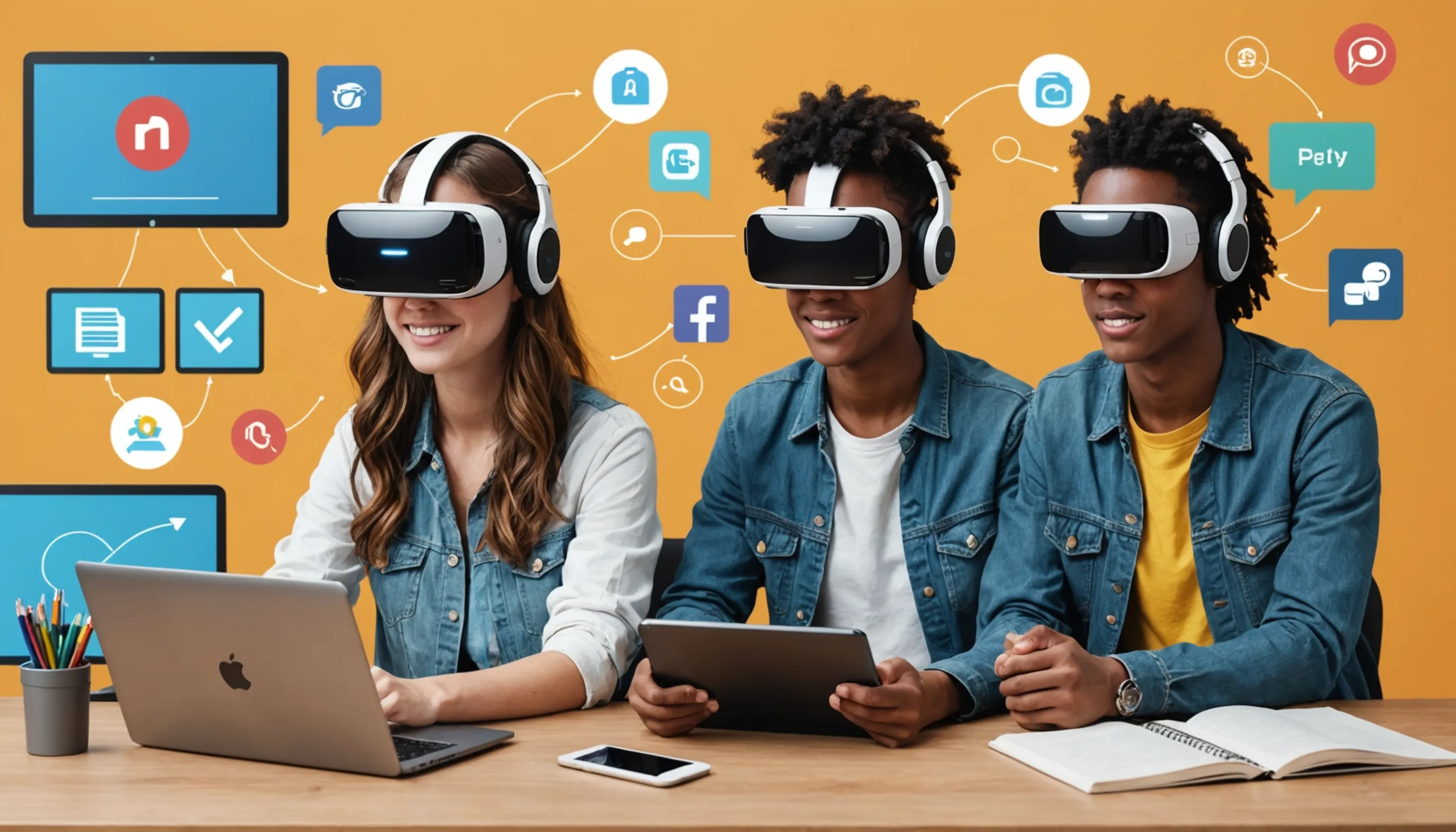Future of Learning Technologies
 HvWHenry van Wagenberg
HvWHenry van Wagenberg
The Future of Learning Technologies: Trends and Innovations
The future of learning technologies is poised to revolutionize education as we know it. Innovations such as artificial intelligence, virtual and augmented reality, and personalized learning experiences are becoming increasingly prevalent in classrooms. These technologies enhance engagement and facilitate deeper understanding.
For instance, AI can tailor content to fit individual learning styles, while VR offers immersive experiences that make complex concepts more accessible. As these trends continue to evolve, they promise to create a more dynamic, inclusive, and effective learning environment that meets the diverse needs of students.
Emerging Technologies in Education
Emerging technologies in education are transforming how students learn and interact with information. These innovations are reshaping traditional classrooms into dynamic environments that cater to various learning styles.
One significant trend is the integration of artificial intelligence (AI). AI-driven tools can analyze student performance and adapt learning materials to meet individual needs. This personalization enhances engagement and ensures that students grasp key concepts at their own pace.
Another exciting development is the use of virtual reality (VR) and augmented reality (AR). These technologies provide immersive experiences, allowing students to explore historical sites, conduct virtual science experiments, or visualize complex mathematical concepts. This hands-on approach fosters deeper understanding and retention of knowledge.
Mobile learning is also on the rise, making educational resources accessible anytime, anywhere. Students can engage with interactive content and collaborate on projects through their devices, promoting flexible learning.
Moreover, the implementation of blockchain technology in education is gaining attention. It can provide secure and transparent records of student achievements, making credential verification easier for colleges and employers.
As these emerging technologies continue to evolve, they hold the potential to create a more equitable and engaging educational landscape. By embracing these innovations, educators can better prepare students for the challenges of the future.
The Role of Artificial Intelligence in Learning
The role of artificial intelligence (AI) in learning is becoming increasingly significant, revolutionizing how students engage with educational content. AI technologies are designed to create personalized learning experiences, catering to the unique needs and preferences of each student.
One of the most notable applications of AI in education is in adaptive learning systems. These systems assess a student's performance in real-time and adjust the difficulty of tasks accordingly. For instance, if a student struggles with a particular math concept, the system can provide additional resources and practice problems tailored to help them improve.
Furthermore, AI-powered chatbots are enhancing support for students outside the classroom. These virtual assistants can answer questions, provide explanations, and guide students through complex topics, offering immediate assistance whenever needed.
AI is also being utilized in grading and assessment. Automated grading systems can evaluate assignments quickly, providing timely feedback to students and freeing up educators' time for more personalized instruction.
Moreover, AI can analyze vast amounts of educational data, identifying trends and patterns that can inform curriculum development and instructional strategies. This data-driven approach enables educators to make informed decisions about teaching methods and resource allocation.
As AI continues to evolve, its potential to transform education is immense. By fostering personalized learning experiences and enhancing support systems, AI is helping to create a more engaging and effective learning environment for students worldwide.

Virtual and Augmented Reality in the Classroom
Virtual reality (VR) and augmented reality (AR) are making significant strides in education, fundamentally changing the way students interact with learning materials. These immersive technologies provide unique opportunities for engagement, allowing students to explore subjects in ways that traditional classrooms cannot offer.
In a VR classroom, students can be transported to different environments, such as ancient civilizations or outer space, providing an experiential learning opportunity that enhances understanding and retention. For example, a history lesson can come to life as students virtually walk through the streets of Rome, witnessing historical events firsthand.
AR, on the other hand, overlays digital information onto the real world, enhancing the learning experience without isolating students from their physical environment. This can be particularly beneficial in subjects like biology or geography, where students can visualize complex structures or processes. For instance, using AR apps, students can dissect virtual frogs or explore geographical features by simply pointing their devices at a map.
Additionally, both VR and AR can cater to different learning styles. Visual learners benefit from immersive graphics, while kinesthetic learners engage through interactive simulations. This adaptability makes these technologies valuable for diverse classrooms.
As educators increasingly embrace VR and AR, they are finding that these tools not only boost student engagement but also foster collaboration among peers. By working together in virtual settings, students develop teamwork skills that are crucial for their future careers. The integration of these technologies signifies a promising shift towards a more interactive and effective educational landscape.
Personalized Learning Experiences
Personalized learning experiences are transforming education by tailoring instruction to meet the individual needs of each student. This approach recognizes that students have different learning styles, paces, and interests. By utilizing data-driven insights, educators can customize lessons, assignments, and assessments to align with each learner's strengths and weaknesses.
Technology plays a crucial role in facilitating personalized learning. Adaptive learning platforms analyze student performance in real time, adjusting content accordingly. This ensures that learners receive the support they need, fostering a more engaging and effective educational experience that empowers them to thrive.
Adaptive Learning Technologies
Adaptive learning technologies are revolutionizing the educational landscape by providing personalized learning experiences tailored to each student's unique needs. These technologies leverage data analytics and artificial intelligence to adjust the learning path based on individual performance and engagement.
Key features of adaptive learning technologies include:
- Real-time Assessment: These systems continuously evaluate student performance, identifying strengths and areas for improvement.
- Customized Content: Based on assessment data, adaptive platforms modify lessons and resources to fit the learner's pace and style.
- Individualized Feedback: Students receive immediate feedback on their work, helping them understand concepts more deeply and rectify mistakes promptly.
- Learning Pathways: Adaptive technologies create personalized learning pathways, guiding students through content that aligns with their interests and goals.
For example, in a math class, an adaptive learning platform might present simpler problems to a student struggling with basic concepts, while offering advanced challenges to those who excel. This ensures that each student is appropriately challenged, preventing frustration or boredom.
The benefits of adaptive learning technologies are profound:
- Increased engagement and motivation among students.
- Higher retention rates and improved academic performance.
- Enhanced teacher effectiveness, as educators can focus on providing targeted support where needed.
As adaptive learning technologies continue to evolve, they promise to create more inclusive and effective educational environments, helping students reach their full potential.

The Impact of Gamification on Learning
The impact of gamification on learning has been profound, transforming traditional educational approaches into engaging, interactive experiences. By incorporating game-like elements into the learning process, educators can motivate students and foster a deeper understanding of the material.
Gamification includes various techniques, such as:
- Point Systems: Students earn points for completing tasks, encouraging them to engage more with the content.
- Leaderboards: Friendly competition is introduced as students can see their rankings, motivating them to improve their performance.
- Badges and Achievements: Recognizing accomplishments through badges provides a sense of achievement and encourages continuous learning.
- Challenges and Quests: By framing assignments as quests, students find learning more enjoyable and immersive.
Research indicates that gamification can lead to improved engagement and retention rates. For instance, a study by the Journal of Educational Psychology found that students who participated in gamified learning experiences demonstrated a 20% increase in retention compared to those in traditional settings.
Furthermore, gamification promotes essential skills such as collaboration, problem-solving, and critical thinking. By working together to complete challenges or navigate virtual worlds, students develop teamwork skills that are crucial for future success.
As gamification continues to grow in popularity, it is essential for educators to thoughtfully integrate these elements into their teaching strategies. By doing so, they can create a dynamic learning environment that not only captivates students but also enhances their overall educational experience.
Online Learning Platforms and Their Evolution
Online learning platforms have evolved significantly over the past decade, transforming the educational landscape. Initially, these platforms offered basic course materials and videos, but they have since expanded to provide a comprehensive learning experience.
Today’s online learning platforms include features such as:
- Interactive Content: Engaging multimedia elements like quizzes, simulations, and discussion forums enhance student participation.
- Personalized Learning: Adaptive algorithms tailor content based on individual performance, ensuring a customized educational journey.
- Mobile Accessibility: With the rise of smartphones and tablets, learners can access courses anytime, anywhere.
Platforms like Coursera, edX, and Udacity now partner with universities and industry leaders to offer high-quality courses, providing learners with opportunities to earn certifications and degrees. As technology continues to advance, the potential for online learning platforms to innovate further and meet the diverse needs of students is immense.
Benefits of Online Learning for Teenagers
Online learning for teenagers offers a multitude of benefits that cater to the unique needs and preferences of this age group. As education continues to evolve, the advantages of online platforms are becoming increasingly evident.
One of the primary benefits is flexibility. Online learning allows teenagers to access course materials and complete assignments at their own pace. This flexibility enables them to balance their studies with extracurricular activities, part-time jobs, and personal interests.
Additionally, online learning promotes self-discipline and time management skills. As students navigate their schedules and deadlines independently, they learn to prioritize tasks and develop essential organizational skills that will benefit them in higher education and future careers.
Another significant advantage is the access to diverse resources. Online platforms provide a wealth of learning materials, including videos, articles, and interactive tools, catering to various learning styles. This variety helps keep teenagers engaged and allows them to explore subjects in depth.
Moreover, online learning fosters global connectivity. Teenagers can collaborate with peers from different backgrounds, enhancing their cultural awareness and communication skills.
Lastly, online learning can be tailored to individual interests, allowing students to pursue subjects that may not be available in traditional school settings. This personalized approach fosters a passion for learning and encourages lifelong educational pursuits.
As online learning continues to grow, its potential to positively impact teenagers' educational experiences is undeniable.
The Future of Hybrid Learning Environments
The future of hybrid learning environments is set to redefine education by blending traditional classroom instruction with online learning. This innovative approach offers the best of both worlds, providing flexibility while maintaining the benefits of face-to-face interaction.
One of the most significant advantages of hybrid learning is its adaptability. As educational institutions embrace technology, they can create personalized learning experiences that cater to diverse student needs. For instance, students can attend lectures in person while accessing supplementary materials online, allowing them to learn at their own pace.
Moreover, hybrid learning fosters collaboration. Students can engage with their peers in the classroom and online, facilitating discussions and group projects that enhance their understanding of the material. This collaborative environment prepares students for the modern workforce, where teamwork and digital communication are essential.
The integration of technology in hybrid learning environments also enhances engagement. Interactive tools like virtual simulations, gamified lessons, and multimedia resources can make learning more enjoyable and effective. These tools cater to various learning styles, ensuring that students remain engaged and motivated.
As hybrid learning continues to evolve, educators must focus on providing support and training for both teachers and students. By investing in professional development and technology resources, schools can ensure a smooth transition to this new learning model.
Ultimately, the future of hybrid learning environments promises to create more inclusive, engaging, and effective educational experiences for all students.
